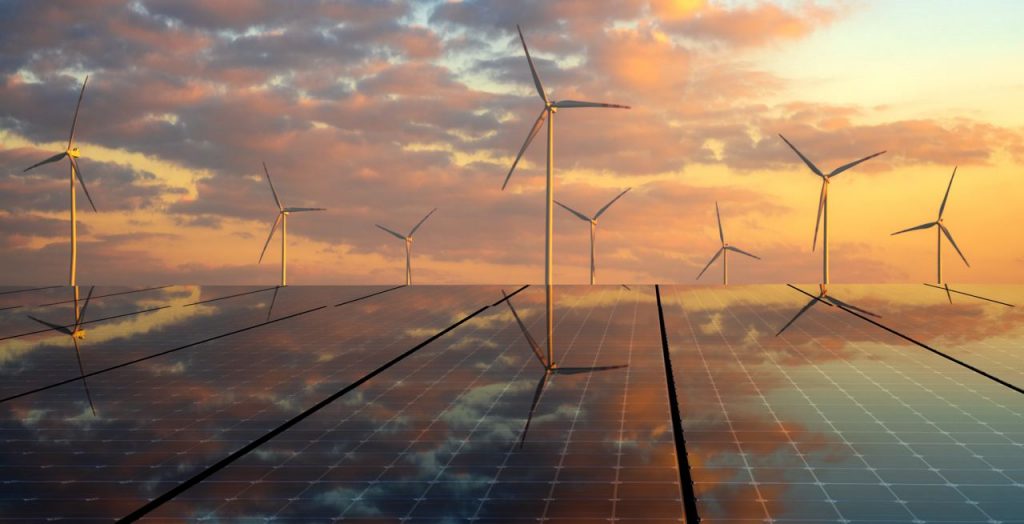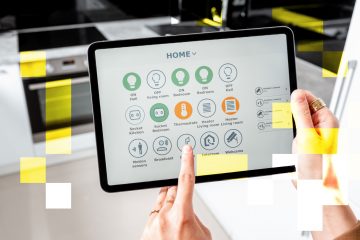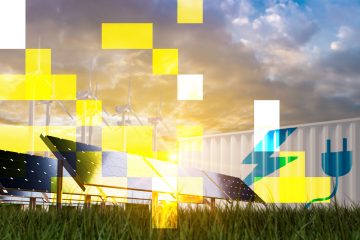In a world of ever-increasing complexity, technology has the power to simplify and make life easier. Energetics and IT – goes together, why? For the energy sector, the technology that powers the world today is offering a host of solutions to help create cleaner and cheaper energy for everyone. Energy plays a major role in our everyday life. It is what moves us to do important things in our lives. The energy sector and electronics industry are getting more and more dependent on information and communication technologies (ICT). To keep up with the innovations in these fields, you need solutions that help improve different areas of your business.
The energy sector of any country or organization is considered as the backbone of the economy. If we look at all the developments made in the world of information technology, we can see the significant impact all these developments had on the energy sector. This blog will provide an overview of how IT solutions impacts the world of energy production and distribution and how this has in turn helped all sectors of the economy.

How can IT technology help energetics?
Energetics is an emerging science that involves the use of nanotechnology in the development of new energy sources. Energetics is a broad term, which describes the process of converting one form of energy into another. It is a term used in both the nuclear and energy industries and is particularly important in the development of alternative energy sources. The term is also used to describe the processes of energy production, such as nuclear energy and geothermal energy.
Communication, learning, and thinking are all affected by technology. People are better able to engage with the material they are learning and have difficulty with thanks to making learning interactive and collaborative. They can also access more resources thanks to interactive and collaborative learning.
By improving the use of technology, new products are becoming even more energy efficient since these improvements reduce the amount of energy that a product consumes while retaining the same level of efficiency. So that less energy is required to use heating and cooling systems, fewer resources are needed to provide such services.
Energy efficiency is achieved when the amount of energy that is consumed by a certain activity is reduced. Many homes, office buildings and factories use energy inefficiently due to the fact that they are made from old structures.

What IT technologies are used in Energetics to help to stay in demand?
Let’s take a look at a few technologies we can expect to see in the marketplace within the next few years that will make our homes even more sustainable.
1. Smarter, More Connected Homes:
We currently live in an increasingly interconnected world – and that trend extends to our homes as well. The Internet can now provide real-time data for new electronic appliances and devices, making it easier to monitor and reduce energy consumption.
The Energy Department’s Building Technologies Office is supporting a project that will soon make these technologies more efficient and more intelligent. Researchers at Oak Ridge National Laboratory have developed new wireless sensors to improve home energy efficiency by monitoring air temperatures, humidity, light levels, and occupancy.
2: Ultracapacitors
It is not by chance that Maxwell Technologies from San Diego, California, has emerged as one of the companies leading the way. Its engineers have developed and are manufacturing one of the most promising technologies available for clean-energy storage and performance: ultracapacitors. Ultracapacitors work by quickly capturing energy and releasing it rapidly when needed using an electrostatic field. Conventional batteries and advanced lithium-ion batteries relying on chemical reactions cannot achieve this because they charge and discharge slowly.

4: Physical network capacity can be augmented by digital technologies
Increasing electricity demand requires the expansion of transmission and distribution networks, but many countries find it difficult to build new lines. Through the application of the Internet of Things to the electricity sector, operators will be able to effectively analyze conditions and electricity flow on the lines, which will allow them to expand transmission capacity without increasing physical footprints. AI-based data intensive techniques can also enable a higher share of renewables without jeopardizing energy security by forecasting wind and solar production with greater precision.

Helpful IT solutions for energy companies?
Digitalization has become an integral part of the energy sector, a trend that can’t be halted. A company that wishes to survive in the future – and thus be able to stay in business – needs to harness the power of digital platforms, big data analytics, the IoT, IT security, and cloud solutions. Due to being ‘natural’, renewable energy comes with a higher ‘uncertainty’ factor, making the plant operations and maintenance processes more complex. Unfavorable weather conditions can easily damage the wind turbines, but prolonged idle time is costly as well. On-site maintenance and repair works, especially in remote, hard-to-reach locations, can majorly uptick the operations bills and sink profitability.
Hence, market leaders are actively looking into new tech solutions: Some of the most help IT solutions for energy companies are as follow
- Cloud computing enables organization-wide connectivity and data exchange, which is vital to any digitization initiative.
- Industrial IoT solutions enable operational personnel to collect and analyze data about equipment performance (from temperatures to sound levels, etc.).
- Data collection from different sources (internal systems, IoT devices, external partners) is operationalized through a predictive analytics approach providing real-time insights.
- Another technology that is highly beneficial to the renewable energy sector is digital twinning. Through this technology, physical assets, systems, and processes can be created virtually. Digital twins are representations of real wind turbines that are constantly updated with new data from their physical counterparts via network connections.

CRM, ERP systems in energetics?
There are various CRM, ERP systems in the market. These systems are useful in gathering and organizing data and data. The data is viewed by the company to gain insights that help in the decision-making process and overall risk management.
Tesco’s Hub
Tesco is a customer-centric enterprise that is eager to provide innovative solutions for its customers. Tesco offers a CRM system that is a complete customer service solution with features such as self-checkout, customer retention, and loyalty. The solution also provides services such as mobile payments, electronic receipts, order tracking, and mobile marketing services.
Eagle Eye Solutions
Eagle Eye Solutions has been providing its clients with customized IT solutions since 1994. It offers a CRM system that includes features such as multi-channel support, unified communications, and real-time analytics. This ERP ERP software helps companies in the energy sector manage their businesses efficiently.

Energy Dynamics Corporation
Energy Dynamics Corporation offers a comprehensive energy management system for the oil and gas industry. The software allows users to maximize control over their operations by automating business processes such as accounting, procurement, engineering, safety, and maintenance. The software can also be used for managing the retail functions of an organization.



